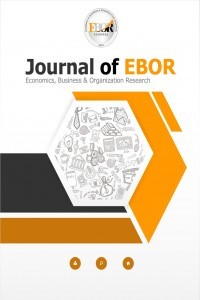LEAN-TEAMS CHARACTERIZATION
LEAN-TEAMS CHARACTERIZATION
Teams Lean system, Effectiveness,
___
- Ahlstrom, P. & Karlsson, C. (2000). “Sequences of manufacturing improvement initiatives: the case of delayering”, International Journal of Operations & Production Management, 20(11/12), pp. 1259-77.
- Benders, J., & Van Hootegem, G. (1999). “Teams and their context: moving the team discussion beyond existing dichotomies”, Journal of Management Studies, 36(5), pp. 609-628.
- Biazzo, S., & Panizzolo, R. (2000). “The assessment of work organization in lean production: the relevance of the worker’s perspective”, Integrated Manufacturing Systems, 11(1), pp. 6-15.
- Bidanda, B., Ariyawongrat, P., Needy, K.L., Norman, B.A. & Tharmmaphornphilas, W. (2005). “Human related issues in manufacturing cell design, implementation, and operation: a review and survey”, Computers & Industrial Engineering, 48(3), pp. 507-23.
- Cohen, S. G., and Bailey, D. E. (1997) “What makes teams work: Group effectiveness research from the shop floor to the executive suite”, Journal of management, 23(3), pp. 239-290.
- Dankbaar, B. (1997). “Lean production: denial, confirmation or extension of sociotechnical systems design?”, Human Relations, 50(5), pp. 567-83.
- Delarue, A., Van Hootegem, G., Procter, S. & Burridge, M. (2008). “Teamworking and organizational performance: A review of survey-based research”. International Journal of Management Reviews, 10(2), pp 127–148.
- Delbridge, R., Lowe, J., & Oliver, N. (2000). “Shopfloor responsibilities under lean teamworking”, Human relations, 53(11), pp. 1459-1479.
- Emiliani, M. L. (2006). Supporting small businesses in their transition to lean production. Supply chains and total product systems: a reader, pp. 327-334.
- Fernández, E., Avella, L., & Fernández, M. (2006). Estrategia de Producción. Segunda Edición McGraw-Hill. Madrid, España.
- Forza, C. (1996). Work organization in lean production and traditional plants: what are the differences?. International Journal of Operations & Production Management, 16(2), pp. 42-62.
- Gilson, L.L., Mathieu, J.E., Shalley, C.E. & Ruddy, T.M. (2005). “Creativity and standardization: complementary or conflicting drivers of team effectiveness?”, Academy of Management Journal, 48(3), pp. 521-31
- Jaca, C., Viles, E., Mateo, R., Santos, J., & Tanco, M. (2012). “Equipos de Mjora: Aplicación del modelo de efectividad en equipos de mejora de empresas de la Comunidad Autónoma Vasca”, ideas 16, p. 17.
- Karlsson, C., & Åhlström, P. (1996). “Assessing changes towards lean production”, International Journal of Operations & Production Management, 16(2), pp. 24-41.
- Kozlowski, S. W., & Ilgen, D. R. (2006). “Enhancing the effectiveness of work groups and teams”, Psychological science in the public interest, 7(3), pp. 77-124.
- Liker, J.K. (2004), The Toyota Way: 14 Management Principles from the World’s Greatest Manufacturer, McGraw-Hill, New York, NY.
- Malloch, H. (1997). “Strategic and HRM aspects of kaizen: a case study”, New Technology, Work and Employment, 12(2), pp. 108-22.
- Mathieu, J., Maynard, M. T., Rapp, T., & Gilson, L. (2008). “Team effectiveness 1997-2007: A review of recent advancements and a glimpse into the future”, Journal of Management, 34(3), pp. 410-476.
- McGrath, J. E. (1964). Social psychology: A brief introduction. Holt, Rinehart and Winston.
- Olivella, J., Cuatrecasas, L., & Gavilan, N. (2008). “Work organisation practices for lean production”, Journal of Manufacturing Technology Management, 19(7), pp. 798-811.
- Powell, A. (2011). “Work Team Factors and Outcomes Sustainability in Lean Manufacturing”. In IIE Annual Conference. Proceedings (p. 1). Institute of Industrial and Systems Engineers (IISE).
- Robertson, E., Morgan, L., New, S., Pickering, S., Hadi, M., Collins, G., Rivero Arias, O., Griffin, D. & McCulloch, P. (2015). “Quality improvement in surgery combining lean improvement methods with teamwork training: a controlled before-after study”, PloS One, 10(9), e0138490.
- Schuring, R. W. (1996). Operational autonomy explains the value of group work in both lean and reflective production. International Journal of Operations & Production Management, 16(2), 171-182.
- Shah, R., & Ward, P. T. (2007). Defining and developing measures of lean production. Journal of operations management, 25(4), pp. 785-805.
- Shingo, S. & Dillon, A.P. (1989). A Study of the Toyota Production System from an Industrial Engineering Viewpoint, Productivity Press, Cambridge, MA.
- Swank, C. K. (2003). “The lean service machine”, Harvard Business Review, October, pp. 123-129.
- Tranfield, D., Denyer, D., & Smart, P. (2003). Towards a methodology for developing evidence‐informed management knowledge by means of systematic review. British Journal of Management, 14(3), 207-222.
- Uhrin, Á., Bruque-Cámara, S., & Moyano-Fuentes, J. (2017). Lean production, workforce development and operational performance. Management Decision, 55(1), pp. 103-118
- Van Amelsvoort, P. & Benders, J. (1996). “Team time: a model for developing self-directed work teams”, International Journal of Operations & Production Management, 16(2), pp. 159-70.
- Womack, J. & Jones D. (1996). Lean Thinking: Banish waste and Create wealth in your corporation. Riverside: Free Press.
- Yayın Aralığı: Yılda 2 Sayı
- Başlangıç: 2019
- Yayıncı: Mehmet GÖKERİK
JOB SATISFACTION AND CREATIVITY – THE CASE OF A TRANSITION COUNTRY
Aelita MANI, Nives LAMCE, Gentian HOXHALLI
Hayda Abu HASAN, Sathiswaran UTHAMAPUTHRAN
Charitha Harshani PERERA, Rajkishore NAYAK, Long Thang Van NGUYEN
INNOVATIVE PREDICTION OF COMMUNICATION AGENCIES
Michal KUBOVİCS, Anna ZAUŠKOVÁ
Anwar AL-MIJRAB, Abdulaziz ELWALDA
Fatih CEYLAN, Işıl EREM CEYLAN
IS A POSITIVE DIVERSITY CLIMATE AN ANTECEDENT OF ORGANIZATIONAL REPUTATION? AN EMPLOYEE PERSPECTIVE
PUBLIC POLICIES FOR INTERNATIONALIZATION: A STUDY FOR PORTUGUESE FIRMS
Carla Azevedo LOBO, André Pereira MATOS, Ricardo BISCAIA, Ana Teresa FERREIRA, Susana OLIVEIRA
RETARGETED ADVERTISING AND FEAR OF MISSING OUT IN YOUNG PEOPLE: TOWARDS THE DEVELOPMENT OF A SCALE
